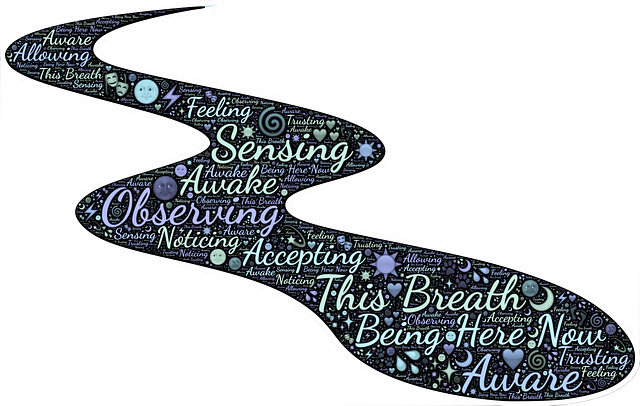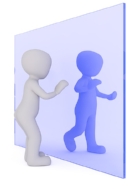From October 2006
In my private practice, I work with people at all stages of wellness and injury. It's not unusual for a new student to begin with me when they've healed most of the way, but now find they are at a plateau or stuck in a cycle of re-injuring themselves. The Alexander Technique provides a valuable tool no matter where you are in the healing process, and complements most healing modalities.
One of the challenges of dealing with pain is creating accommodations in your daily life. Still, when you're in pain, you have a constant reminder that brings you back to conscious awareness of how you are doing what you are doing. You don't have to be reminded to avoid doing things that exacerbate your pain. You pay more attention to what you are about to do, and make choices about what not to do.
The challenge comes when you start to feel better, and stop paying such close attention to your actions. This crucial time is when you are at risk for a set back or re-injury. Perhaps you've felt limited or just plain tired of having to be so careful about your movements. As soon as you have a few good days (or even a few good hours) it's easy to let your guard down and go back to the way you did things before you had to think about it.
This is the point in the recovery process when you can truly benefit from slowing down and making choices about your activities. Think of it as insurance, or getting some savings in the bank in terms of your healing process.
******************************************
Here's a personal example:
Last year, as I dealt with chronic pain in my low back over a period of about 4 months, I adopted the practice of avoiding sitting at all costs. I felt best when standing, so once I got out of bed in the morning, I avoided sitting and even bending down as much as I could. Sleeping was painful, as I can only sleep on my side. At the worst of the pain, I slept poorly for many nights in a row. While awake, I could be comfortable flat on my back with my knees bent and some books behind my head. (Constructive rest position). I could sometimes be comfortable on my hands and knees.
I chose to stand on the subway, and while I did sit in a car, I had seriously considered laying down in the back seat for the duration of the trip. I was unable to exercise; bending to put my trousers on was painful; I avoided going out to restaurants or the movies. I was emotionally and physically exhausted from the pain. I created all kinds of adaptations to avoid activities that caused or worsened the pain.
As soon as I began to feel better, I went though another challenging phase of healing. I'd feel better, so I'd over do it and spend the next couple of days feeling like I was back as square one. After a few rounds of this particular cycle, I began to use my Alexander skills of awareness and inhibition (saying no before responding to a stimulus). I found the clarity to continue to create safer conditions in my activities. Even as I was feeling better, I took it very slowly in adding activities back into my life. I went a lot more slowly than I wanted to, so I kept reminding myself to notice that I wasn't in pain as motivation to "just say no".
I also gave myself the support of taking Alexander lessons to help me release the long term tension that had built up from "cringing" in pain over such a long period of time.
************************************
If you have healed from an injury, and know that every so often, something you do causes a return of some or all of your symptoms, recall what kinds of activities you adapted or avoided during your healing process. Reflect to see if you've been engaged in some of the movements or activities that you had to avoid completely while healing. Consider having some lessons with an Alexander Teacher, or consulting with your PT or Massage Therapist, to develop modifications for those activities, and/or a reconditioning program.













